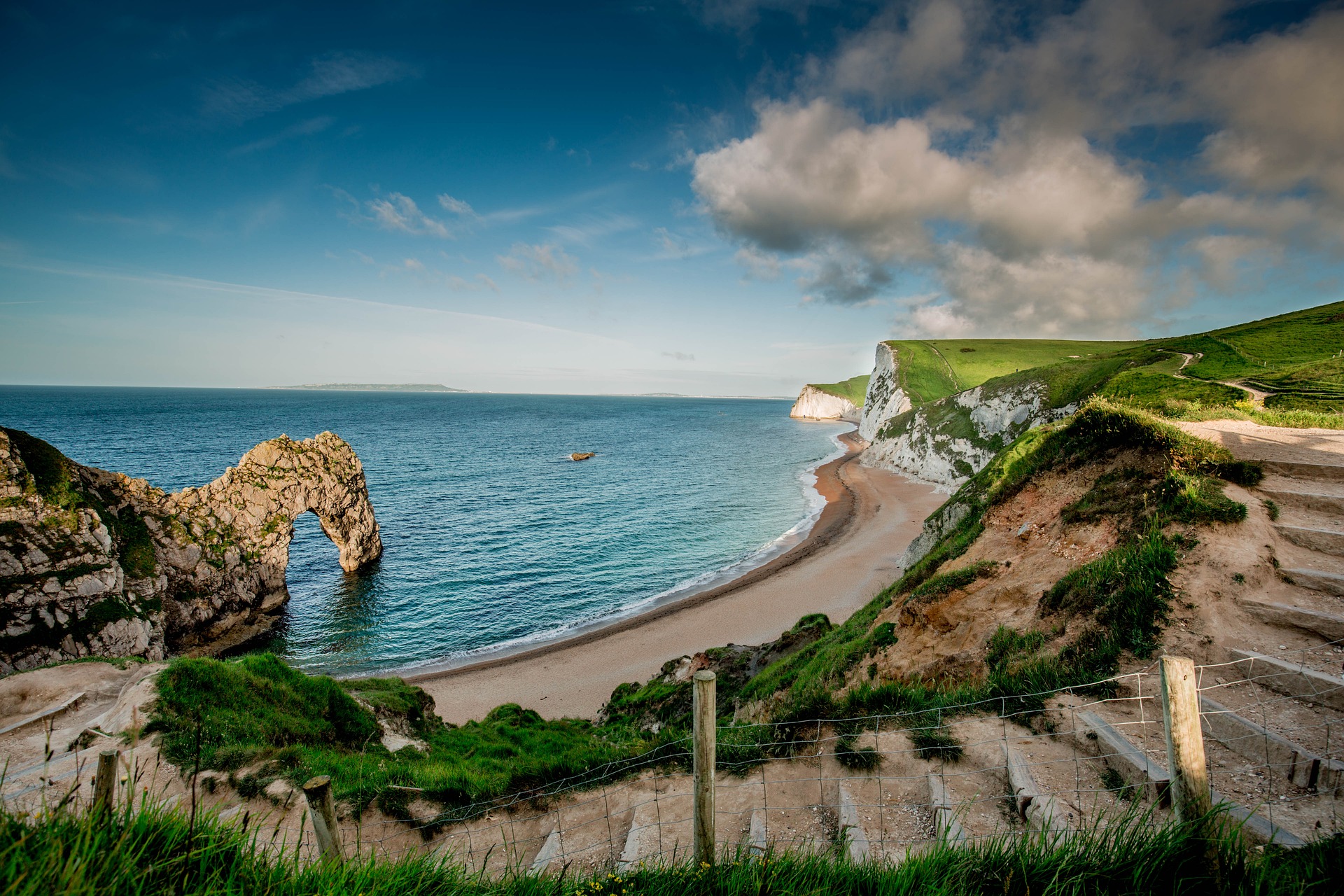A guide to camping with your dog
Of course, we admit we may be biased, but we think camping with your dog makes the experience an even more enjoyable, unforgettable adventure. It keeps the days and nights full of fun and activity, and ensures you’ll never feel bored or lonely.
But, as any dog owner will know, you can’t set off on a trip like this without preparation!
I didn’t camp quite as much as I had planned on my A Walk in the Parks adventure, mainly because the extra weight made a difference when walking for 10 weeks. But Cookie and I did do some camping together and had a great time.
So, based on our own personal experiences, we’ve used this post to share our guide to camping with your dog. Keep reading to find a complete pack list, key things to do before you set off, and our top tips for keeping your dog safe and comfortable.
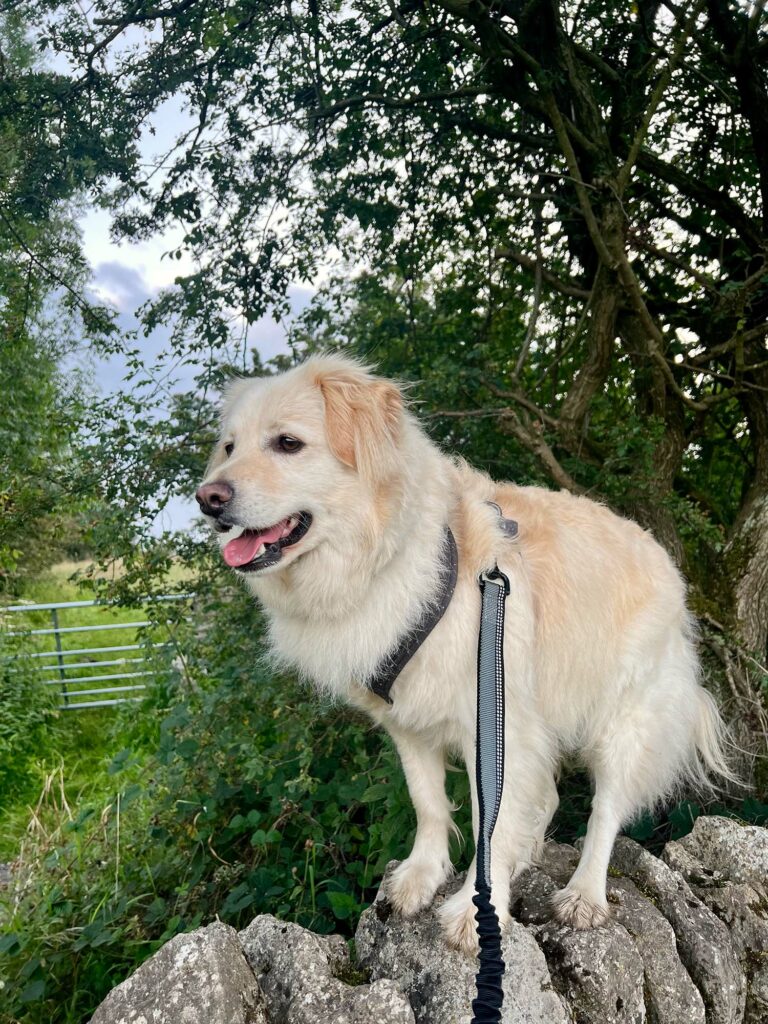
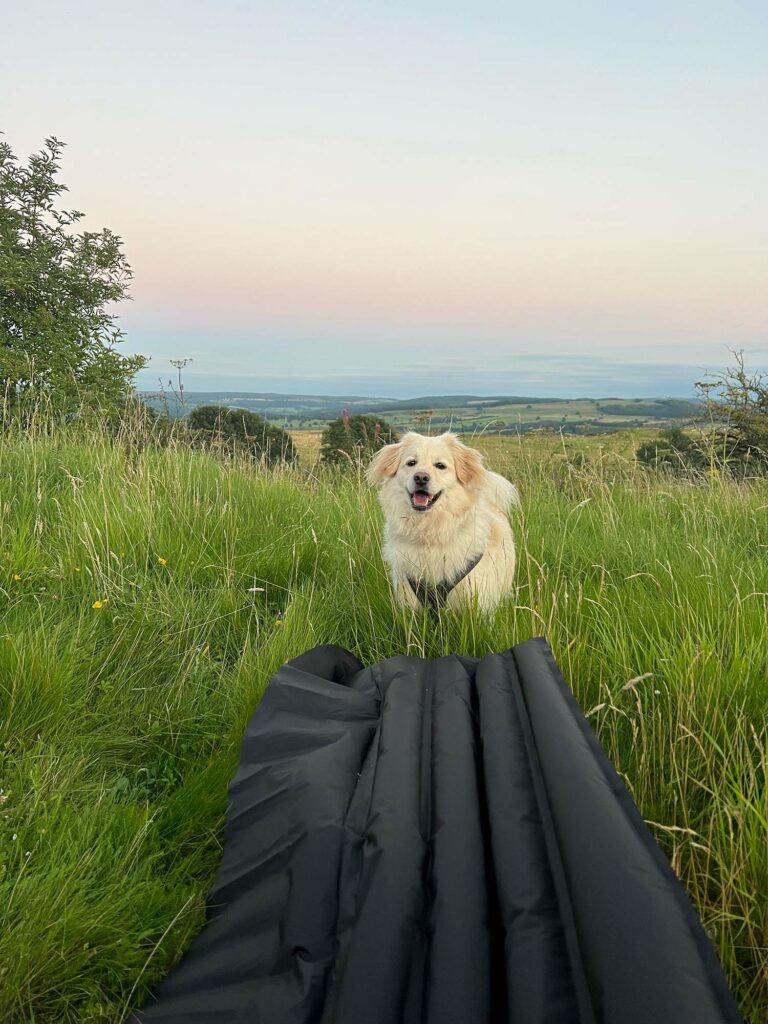
A full packing list for camping with your dog
Travelling with Cookie is absolutely always worth it, though she doesn’t always pack light. This is absolutely everything you might need, but I have highlighted the essential we took in bold. I got this down to the minimum after 10 weeks of walking.
Daily essentials:
- Dog food (plus extra)
- Airtight, waterproof food container – I generally use freezer bags and then double bag in a dry bag
- Fresh water (for the journey, and just in case you don’t have access to water at any point) – though Cookie generally prefers puddles and streams so I don’t take loads extra for her unless it’s super dry
- Collapsible food and water bowls – I generally use one and switch between using it for food and water
- Leash and harness
- Collar (including an ID tag, with your contact information)
- Poo bags – plenty!
- Towel – generally a light weight camping towel that doubles up as a blanket for her
- Toys and treatos!
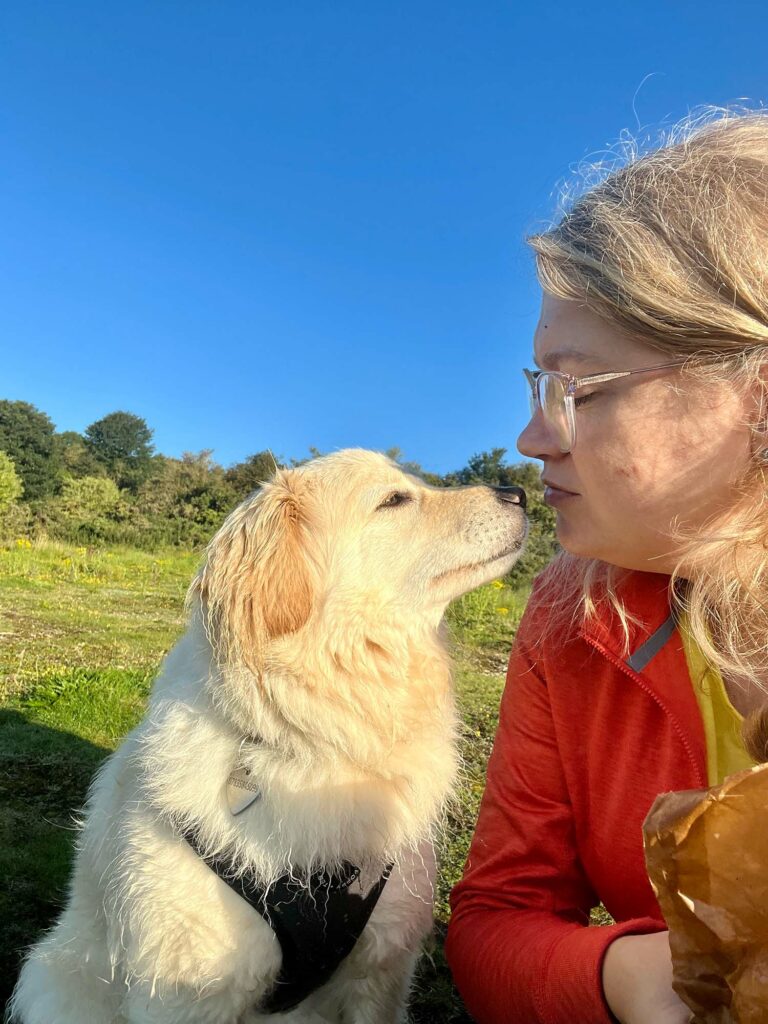
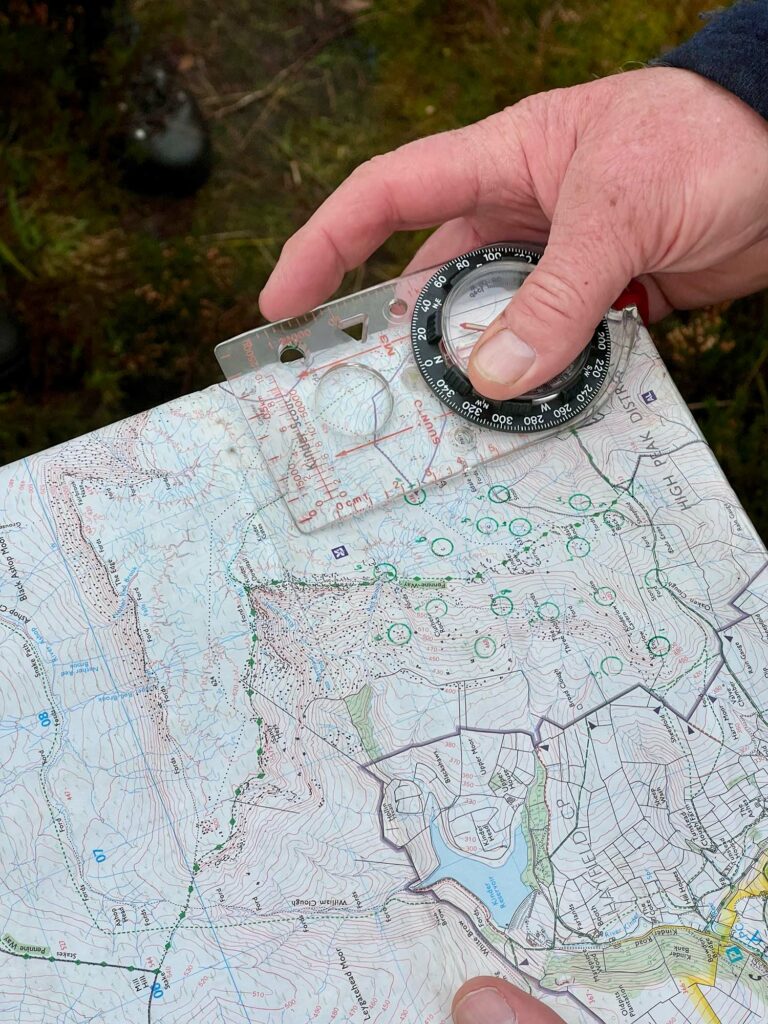
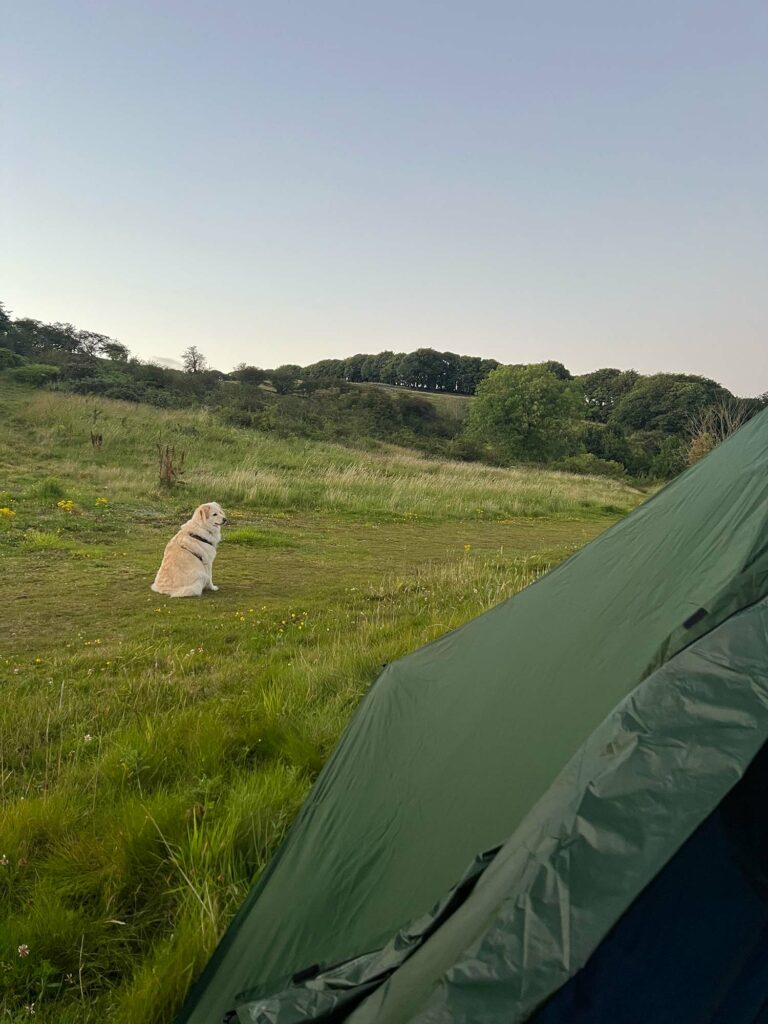
Specific camping gear and equipment:
- Space in the tent for both of you!
- A stake to tie the lead to if your dog is likely to run off, though I would generally attach her lead to my heavy backpack if she seemed she was likely to wander off. Though Cookie doesn’t go too far
- Dog bed or a blanket depending on your dog’s comfort level. Cookie just slept on her towel
- A cool mat (if you’re camping in warmer weather)
- A blanket (for the nights, if the temperature drops)
- A raincoat or cold-weather coat (particularly important if you’re camping in colder weather)
- Reflective gear or attachable lights (if your dog is out in low-light conditions) – I have a bright reflective harness
Health and safety:
- A dog first aid kit – this should include antiseptic wipes, bandages, tweezers/tick remover and any medication that they need
- Identification – including a collar tag with your contact details
- Pet passports (if you’re travelling abroad)
- Vaccination records (if you’re travelling abroad)
- Contact information for local vets or any emergency animal clinics
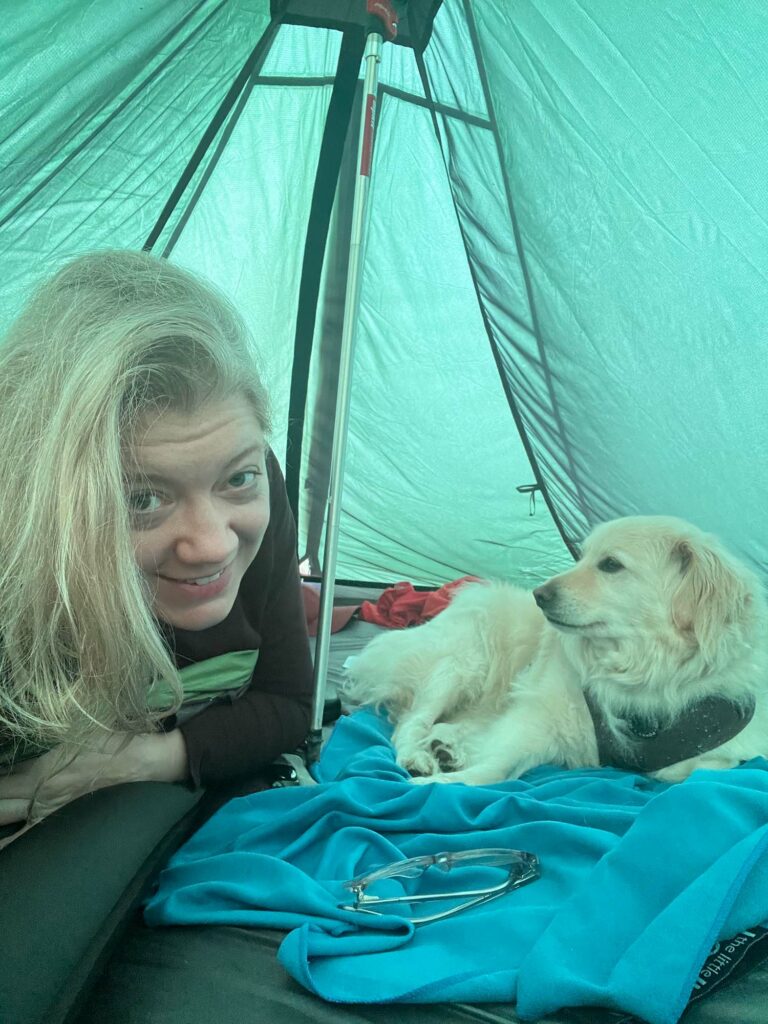
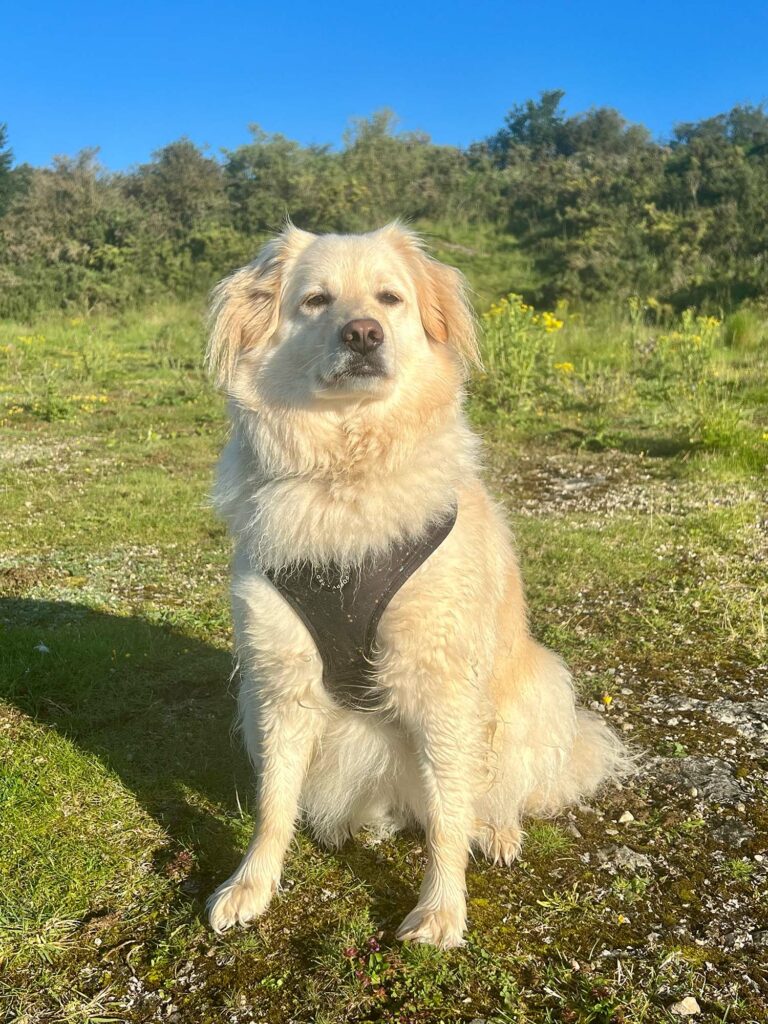
Key things to do before you go camping with your dog
Thankfully, there’s also a lot that you can do ahead of your trip, to get as prepared as possible.
One of the key steps of our guide to camping with your dog is to plan in advance. That way, you can ensure your dog will be as safe and comfortable as possible, and that you are well prepared for any unexpected hiccups.
So, before you go:
- Give your dog a full health check. If you’re going for a while or going abroad then ensure your dog is up-to-date on their medications and vaccinations.
- Do a last-minute training practice. This is especially important if your dog is young. Check that they respond well to your commands, and return promptly when you call them. It is also worth doing a practice camp to see how they handle it closer to home. They hear a lot more noises in a tent than a hotel and if they’re up all night barking that is going to be no fun to you or any camping neighbours.
- Ensure your dog is comfortable with the leash and harness – if the leash, harness or any other equipment or bedding is new, ensure that you help your pup to become familiar and comfortable with them, before your trip.
- Read up on the rules of the campsite(s) that you are visiting. Each site has its own specific pet rules and requirements. For example, some sites might ask you to keep your dog on a leash, and others might have dedicated ‘dog-friendly’ spaces.
- Check the vaccination requirements of the area you are visiting – some regions or countries might have their own specific requirements. The Blue Cross website has some great guidance on this.
- Prepare your dog’s first aid kit – this should include essentials like bandages, antiseptic wipes and tweezers, as well as any other medication they might need, plus general medication (such as flea treatment).
10 top tips for keeping your dog safe and comfortable during a camping holiday
- Choose your campsite carefully – look for a campsite that clearly states that it is pet-friendly, and welcomes dogs. Also, try to find a site that is situated away from areas of heavy traffic. You should also ensure that there aren’t any hazards near the site (such as steep drops).
- Be mindful of local wildlife – find out where the surrounding wildlife areas are, or if there are any spots where rabbits, squirrels and birds are particularly common. Then, ensure your dog is kept on a leash any time you are walking through or near these areas. You will know your dog, so be sensible to the rules and your dog’s behaviour.
- Check for injuries after activities – after any long walks or activities, check your dog for any signs of cuts or injuries, or any ticks. This will ensure any issues are addressed before they are allowed to develop. Cookie got 9 ticks when in Northumberland! They were pretty easy to get out with a tick remover, but with long hair it took a while to check her thoroughly.
- Prepare for weather changes – ensure you prepare for wet weather, by packing your dog’s raincoat, and plenty of towels to dry them off.
- Prepare for temperature changes – equally, you will also need to prepare for significant changes throughout the week (even just from day to night!). We recommend packing a cool mat in case the days get very warm, and a blanket or dog coat for any colder spells or during the night.
- Bring bug protection – this is particularly important if you plan on camping or hiking through woodland. Bug repellents and protective clothing are great at minimising the risk of ticks. Also, as we mentioned above, ensure that you check your dog for ticks at least once a day.
- Ensure their sleeping area is comfortable – all the complaints that humans have about camping (hard, uncomfortable ground and cold nights) are shared by dogs too! So, help ensure they get a good night’s sleep by creating a comfortable sleeping area for them, with a familiar dog bed and blankets.
- Pack things that they are familiar with – things like their favourite toys and blankets will help your dog to feel comfortable and secure in this unfamiliar environment.
- Stick with your usual routine – where possible, try to maintain the routine that you would usually follow at home. This is especially important for feeding times and toilet trips. Again, this will help your dog to feel reassured and comfortable in this new place.
- Give them plenty of fuss! – finally, what better way to keep your dog happy, than plenty of attention, treats and play? Consistently reward good behaviour, and make this trip a fun-filled holiday for your dog too!
A note on dog poo!
It can be easy when camping in the wild to think it is better to leave the dog poo to decompose naturally, rather than put it in a plastic bag and have to carry it to the nearest bin.
However, a lot of animals can get very sick and even die from eating dog poo. It is important to still pick it up and take it with you, or bury it like you would a human poo(!), especially when in areas of livestock such as sheep and cows.
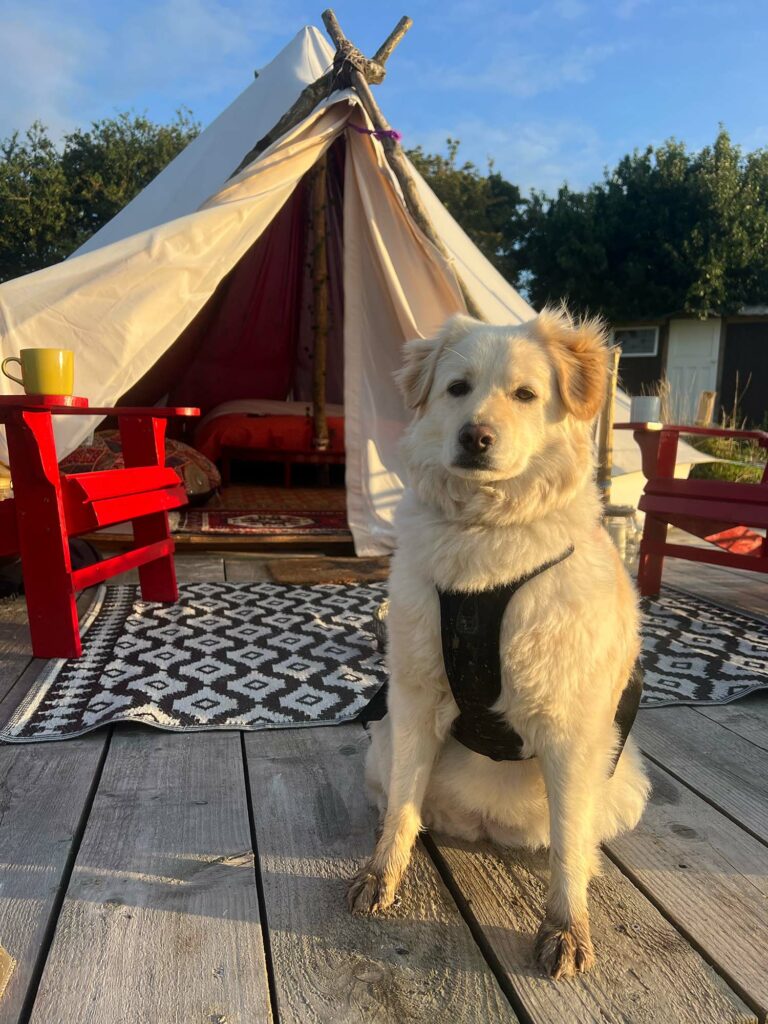
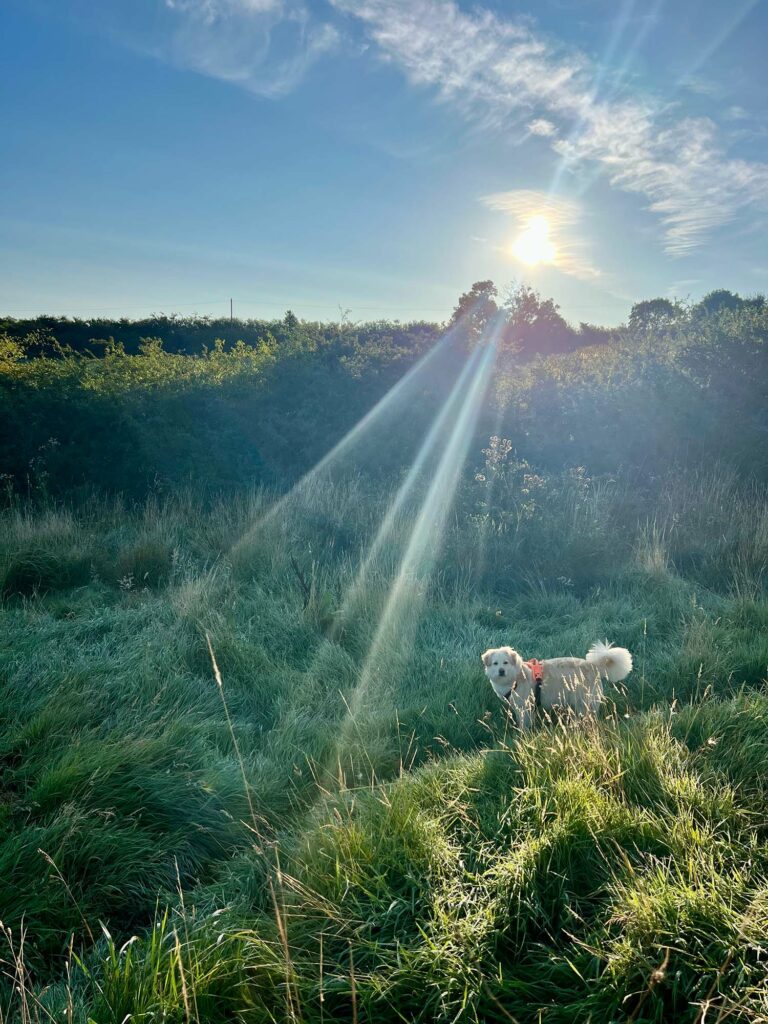
A Walk in the Parks
On August 19th 2023, Jen and her rescue dog Cookie started a huge adventure – 10 weeks of hiking, across 10 National Parks, covering 1,000 miles of distance.
Through the Walk in the Parks challenge, they raised over £20,000 for the Peak District National Park Foundation.
These funds will go a long way towards improving the accessibility of our own Peak District National Park, alongside other wellbeing and climate change projects.
Find more about the work the Peak District Foundation supports.
You can learn more about A Walk in the Parks, and support Jen (and Cookie, of course!) throughout their journey, through our dedicated Walk in the Parks page.
We hope you’ve found our guide to camping with your dog helpful!
If you’re looking forward to an upcoming trip with your pup, or are planning your itinerary for a visit to the Peak District, what other recommendations would you like us to share?
Or, if you have any other tips to add to our list, we’d love to hear your thoughts! You can get in touch with us in the comments, or through our socials.





